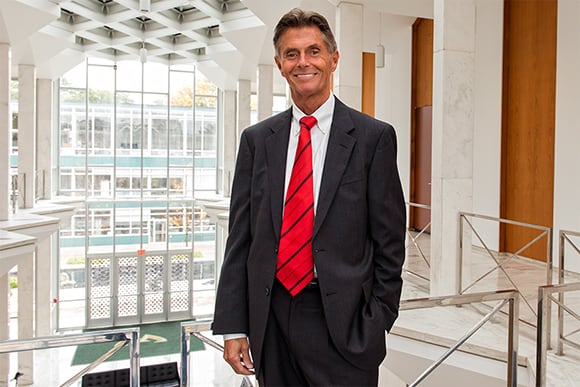
Demographer Kurt Metzger
As we enter into this midterm election season, policymakers and the public are grappling with issues that will chart Michigan’s course for years to come.
But just what will that future Michigan look like? Who will be living here, and how will policy developed today serve those future residents?
While no one has a crystal ball, Pleasant Ridge Mayor and Data Driven Detroit founder and Director Emeritus Kurt Metzger may have something even better: a strong handle on Michigan’s demographic trends and keen insight into how those trends will influence, and be influenced by our public and urban policies.
Bright Ideas had the opportunity to ask Metzger his thoughts on the most important demographic trends that are molding the state’s future, and the kinds of policies Michigan ought to be considering as a result.
It all boils down to one thing, according to Metzger: Michigan’s population is aging. The state’s birth rate has dropped, and it is not attracting younger residents or immigrants in numbers sufficient to stem the gray tide.
“I looked at the 50 largest metropolitan areas in the country, and metro Detroit had the second lowest percentage of population in the millennial ages out of the 50 states,” says Metzger. “Cleveland was the only one lower. We had the third highest percentage of the population in their baby boom years.”
How will that trend impact Michigan in the long run?
“We need to start talking a little bit more about the issues that are important to younger people,” says Metzger. “So that means we need to talk about funding public transportation. Young people don’t care about putting our money into roads. We need to be putting our money in public transportation and transit alternatives.”
“Communities need to be much more aware of their sidewalks, their infrastructure, and things like hiking paths.”
Research backs up Metzger’s assertions. Americans are driving less overall, according to a 2014 study by the Public Interest Research Group and the Frontier Group on 21st century transportation. This is especially true for millennials, who drove 23 percent fewer miles on average in 2009 than they did in 2001, a steeper decline than any other age group. Millennials are more likely to want to live in dense, urban neighborhoods and adopt other forms of transportation, such as biking, walking and public transit, according to the study.
Michigan’s ability as a state to remain economically competitive, according to Metzger, will depend on its ability to attract and retain millennials (those born between 1983 and 2000) while also making sure our communities remain attractive for retiring baby boomers who will drive the health care economy.
And though it may seem surprising, those goals point in the same direction: our urban centers.
A 2014 national poll conducted by the American Planning Association examined public attitudes about communities, and found that both millennials and boomers largely agree on the desirability of community assets like walkability and transit.
The poll showed both demographic groups “want cities to focus less on recruiting new companies and more on investing in new transportation options, walkable communities, and making the area as attractive as possible.” Both groups would prefer to live in a walkable community (56 percent of millennials and 46 percent of boomers) whether in a suburb, city, or rural area, and only eight percent of millennials and seven percent of boomers want to live in auto-dependent suburbs.
All of this points to a need for policies that favors the revitalization of our cities and small towns, with an emphasis on transit, walkability and vibrant urban centers, says Metzger.
Housing is one area communities must start to look at differently, he says.
“Boomers are looking for those central cities, they’re looking for those housing condos and the lofts and everything else,” says Metzger. “At the same time, communities have to start planning for an older population that in many cases wants to stay in their own homes, so we need to start thinking about our housing. Two- and three-story structures are not the answer.”
Localities must also take a look at their policies for walkable infrastructure and transit, says Metzger.
“Communities need to be much more aware of their sidewalks, their infrastructure, and things like hiking paths,” he says. “Again, there’s a similarity between kids or young people pushing babies in strollers and older people wanting sidewalks where they can walk. It’s not like you’re just planning for an older population, you’re also providing services that are attractive to young people and young families.”
A shift in attitude about the role of transit is also needed, he adds.
“We have to get beyond this idea that busses and public transit are for the poor,” says Metzger. “The older population is also looking for transit. They don’t want to be driving their cars. They don’t want to be in this traffic. And they will have to give up their cars eventually.”
Still, the right housing, walkability and transit policies may not be enough to maintain Michigan’s workforce. For that, we will also need to attract new residents, says Metzger.
“An aging population, if you’re not replacing it with younger folks, will not maintain an active workforce,” he says. “It will not make your state or your locality a place where people want to move or bring their businesses.”
Increasing Michigan’s friendliness towards immigrants is an important path for injecting new life into our workforce, Metzger points out. He notes that the Detroit metro area ranks 18th in the country in total population, but 135th in the country in foreign-born population.
“I think Governor Snyder has been very good on the importance of immigration in this state,” he says. “I’ve worked with the Chaldean population and a number of other groups who are all trying to show that they have an economic impact, that they’re important. They’re all desperate to explain something which should be very obvious.”
Metzger says new initiatives such as the opening of the Michigan Office for New Americans in Detroit to help skilled immigrants and Macomb County’s OneMacomb initiative are good starts towards making immigrants feel welcome.
“They are opening the grocery stores and running the gas stations,” says Metzger. “They are small business owners and putting in as many hours as it takes to be able to provide. Also, they work extremely closely together so they don’t necessarily have to rely on the financial industry. They work together and they have their own kind of networks that are very strong.”
Again, the data back these assertions. A fact sheet released by Governor Snyder touts the economic impact of immigrants; immigrants were responsible for a third of high-tech jobs created over the last decade, and for nearly every immigrant entering this country with high-tech skills, 2.5 jobs are created for Americans.
Michigan also needs to get immigrants who come to the state to obtain an education here to stay after they graduate, says Metzger. According to the Michigan Global Talent Retention Initiative, a program designed to retain international students in Michigan after they graduate, more than 25,500 international students attend Michigan colleges and universities.
“We have to be able to offer them whatever needs to be done at the federal or state level to make sure that they’re getting opportunities to stay after they graduate,” he says, “so we can keep them here and benefit from that knowledge and those skills.”


